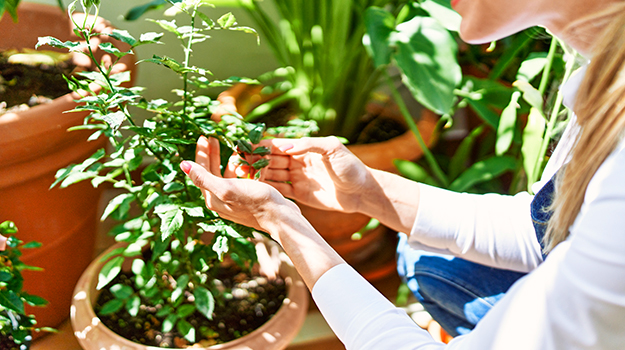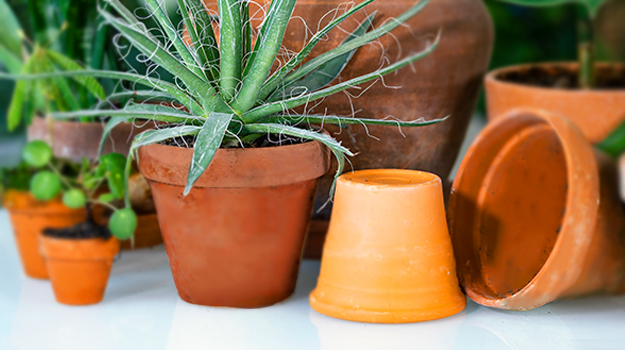The indoor plants that will spend the summer outdoors and your precious seedlings must be acclimated to their new environment. Moving them to the garden without notice must be avoided at all costs as a sudden change of milieu could cause their demise. Here’s how to successfully acclimate your plants in 7 to 10 days, tops.
What does acclimating plants mean?
Indoors, your seedlings, just like your houseplants, live in a controlled environment. The temperature is perfect, the light is adequate, watering is optimal and it is windless, if we make an exception of the fans used to aerate. In short, each plant benefits from conditions that promote its development.
Once outdoors, your little protégés will have to face various light conditions, fluctuating temperatures and humidity levels, and the rain and wind. Acclimatation is a process which gradually habituates them to an environment that is not always favourable and makes them more resilient.
The same thing is done with plants from a greenhouse or garden centre.
How to acclimate plants and seedlings step by step
DAY 1 : Place your plants and seedlings in the shade, protected from the wind. Repeat for two days.
DAY 4 : Move your plants to a semi-shaded and semi-protected spot, with sunlight in the morning, shade in the afternoon and a little more wind. Bring them in at night only if temperatures are below 15 °C. Repeat for two days.
DAY 7 : Move your plants to their final place, making sure their exposure to sunlight is adequate. Even when acclimated, a shade plant will wither in the sun or in partial shade.
If you want to plant directly in the ground, wait 2-3 days before planting.
DAY 10 : Seedlings and houseplants can be planted in the vegetable garden or in flower beds.
How to bring plants indoors in the fall
When the time comes to bring your plants back inside in the fall, gradually re-acclimate them to life indoors. Don’t forget to treat them to avoid bringing insects in at the same time.
Read our article to learn how to treat your plants before taking them inside: How to Use Insecticidal Soap | PRO-MIX Gardening
Some aromatic herbs, vegetable plants and annuals can also be brought indoors before the first frost. Some will only survive while waiting for spring (this saves you from buying them year after year), but others will thrive!
Among others, this is the case with sweet peppers and chili peppers, which can survive indoors for many years and even produce, and cannas, which bloom indoors when the conditions are right. In winter, perennial bell flowers will also brighten up your home with blooms.
Read our article to learn all about the plants that can be brought inside for the winter: Bringing outdoor plants indoors for the winter



